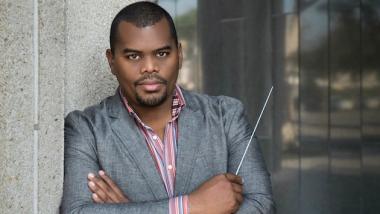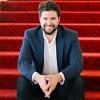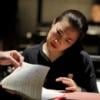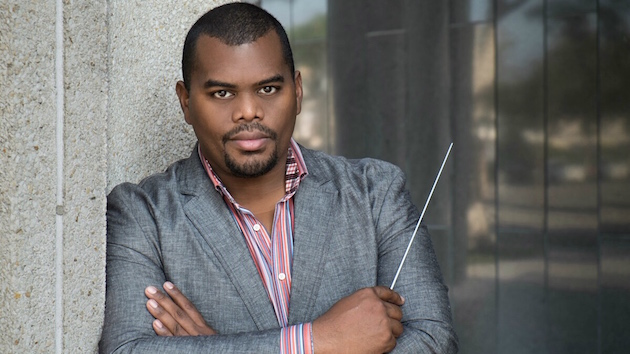
A prolific conductor of film, television, and video game scores, Anthony Parnther may be one of Southern California’s best kept musical secrets. An American conductor of West Indian and Samoan descent, Parnther was recently appointed music director of the San Bernardino Symphony, whose 91st season begins Sept. 14 with the maestro leading the orchestra in a program that includes Orff’s Carmina Burana.
Also a bassoonist with the Hollywood Studio Symphony, Parnther, who was born in Norfolk, Virginia, earned a master’s degree in conducting from Yale University, having studied the art form at Northwestern University and education at East Tennessee State University. He is a leading authority on orchestral works by minority and women composers and has, to date, restored and performed works by Florence Price, Zenobia Powell Perry, William Grant Still, and Duke Ellington, among others.
In addition, the 2019–2020 season will see Parnther taking the podium for his 10th year as music director of the Southeast Symphony in Los Angeles. A primarily African-American orchestra that was founded in 1948, the symphony continues to perform a wide range of works, from spirituals and civil rights’ anthems to Handel’s Messiah. In April of last year, Parnther led a program dedicated to the works of composer/flutist James Newton that also featured musical luminaries such as pianist Gloria Cheng.
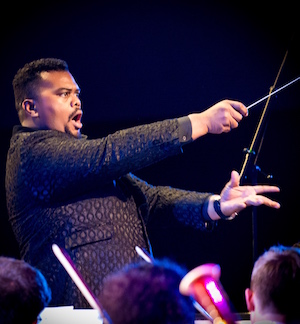
Garnering praise for his conducting prowess throughout the world, Parnther has made appearances on five continents, and in such locales as the United Kingdom, South Korea, and throughout the United States. Indeed, Parnther was one of only two conductors to have opened the refurbished Queen Elizabeth’s Hall (the other was Benjamin Britten in 1968), when he conducted Europe’s first symphony orchestra made up entirely of black and minority ethnic professional musicians, the Chineke! Orchestra. Of that performance, the Guardian’s Tim Ashley wrote, “The finale [of Beethoven’s Fourth Symphony] was edge-of-your-seat stuff, blending rhythmic precision and energy with heady elation.”
And talk about heady elation, Parnther is the go-to guy for conducting Riot Games’ international e-sport juggernaut, League of Legends (LOL). Chalking up a staggering 120 million active users, LOL is the most-played video game on the planet, with Parnther having served as principal conductor for both scoring sessions and live concerts since 2013.
Helming megaconcerts globally, including at venues such as Seoul’s World Cup Stadium, Barcelona’s Palau Sant Jordi, and at home in Los Angeles at the Staples Center, Parnther was delighted to talk about this 21st-century phenomenon, as well as his myriad activities, in a phone conversation that covered the musical waterfront.
What prompted your interest in music — and why the bassoon?
My entry into music was mostly because I wanted to go on field trips. I’d be stuck in some class and would hear on the loudspeaker, “Would all the members of the middle school report to the band room for their trip to Disney World,” or [something] like that. And I wanted to go on all of these fabulous trips. My friends would come back and say how fun this was, so my plot was to join the band. I opened the dictionary and in the “A” section I saw an accordion — I remember seeing it on The Lawrence Welk Show. When I got to the “B” section I decided I would play the bassoon because I thought it was a fascinating contraption. I took it to the band director to join, but, unfortunately, the band did not go on any trips the next year.
You’ve come a long way since not taking a trip with the school band. What does it mean to be appointed the 16th music director of The San Bernardino Symphony Orchestra, where is its home, and what are some of the works audiences can expect to hear during the season?
It means a lot to me since they had a lot of people to choose from and there was a two-year search, which is a normal length of time for an orchestra that size. But I was thrilled to hear the good news and it’s very meaningful to me. I’m the first African-American to conduct that orchestra, and am one of three or four African-Americans conducting in the US.
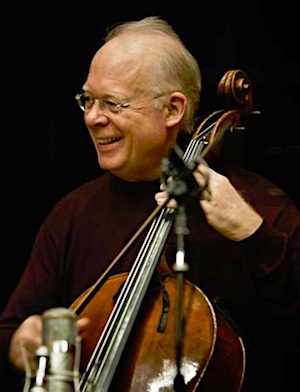
The orchestra has performed at the California Theatre for the Performing Arts in downtown San Bernardino. It’s an old Fox Theatre and a lot of movies were premiered at that house. Don’t quote me, but I think that King Kong premiered there in the 1930s. [Regarding] this season, I didn’t program it, but I was able to fill in a few things here or there. There are six subscription concerts and we’re beginning with Carmina Burana and concluding with a tribute to music from the Golden Age of Hollywood. For the second concert, cellist Lynn Harrell is performing in the first half and Jennifer Holliday takes the second half — two distinct legends from two genres. That will be exciting.
For the Martin Luther King concert in January, I had quite a bit more say. That was more of an open palette for me to go in and choose exactly what we’re doing. On that program is the West Coast premiere of a Requiem by John Wineglass, there’s quite a collection of stirring African-Negro spirituals, and we’re also bringing in a gospel choir. Jacob Lusk was a [2011] finalist on American Idol, and he’ll be singing “Strange Fruit.” That concert will be uplifting and it will confront America’s past, especially in regards to slavery and racism.
How did you get involved in conducting music for film, TV and video game scores?
I started off as a player in the studios nearly 12 years ago, playing many sessions [for] movies. Playing for video games began because I had invited a few video-game composers to a concert I was conducting, and from there I got my first conducting engagement for media music. So it started with video games and poured into the other stuff — movies, jingles, TV, and along those lines.
I got a reputation for being efficient but friendly, because when you’re on a movie score, time is of the essence and there’s no time to mess around. There’s a lot of money involved and you have to do them efficiently. I spend a lot of time in front of orchestras, and composers trust me to help them attain the sound they’re looking for and perhaps to re-orchestrate on the spot. I’ve done everything you can possibly do in regards to media music.
Do you, yourself, play video games, as most people don’t necessarily think of music when they think of that genre, and just how integral is music to the game?
I’m not a gamer and the last thing I played very seriously was Ms. Pacman at the arcade or Galaxy. It was required, and we were encouraged to learn to play the game so we understood what we’re working with. I took private lessons from staff members at League of Legends to learn the ins and outs. If we were doing theme music about a character, it would be similar to research as if I were doing a character.
So, yes, it’s very integral for LOL and music is hugely important to game titles. It’s a very big deal and some of the biggest orchestras — over 100 pieces — I’ve recorded with have been for games. Some of these games are so massive and these arenas are so big and some of the scenarios are incredibly epic and there’s nothing that can deliver that except a big orchestra. There are some games that use synthesizers, but I’ve been lucky to work with clients who love a big symphony orchestra.
Is there one video game concert in particular that stands out for you and how do audiences differ around the world?
One of the most memorable concerts was conducting in front of 75,000 people at the Bird’s Nest Stadium in Beijing. That is an experience I won’t forget. And yes, the audiences are a little different from country to country. In Europe the audiences are quiet, but elsewhere throughout the world, that’s not so much the case.
What piqued your interest in restoring and performing works by minority and women composers?
I was in grad school and noticed that all the music we were playing, for the most part, was by deceased European males — dead white guys. I knew even though I wasn’t playing much [of their] music, that women had contributed to the classical repertory, and that there were many non-Europeans who had written important works. I was curious, and asked my conducting teacher and began researching works of black composers in particular, and became fascinated with Florence Price. She became the initial composer that fanned the flames of my interest with that area of music, and ever since then I’ve been responsible for premieres, recordings, or reconstructions of nearly 100 works by women or minority composers.
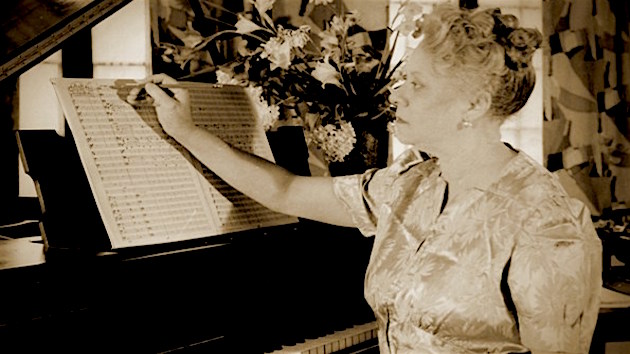
An interesting article came out that said that less than 0.2 percent of music by women was being performed in concert halls. Out of that, how many were women of color? At Southeast Symphony we’ve been America’s leading orchestra in that type of music. That’s been an important project and passion of mine and it’s something I’m going to continue with the San Bernardino Symphony.
I understand that you’ve also worked with both Rihanna and Wu-Tang Clan. How were they as musicians and collaborators?
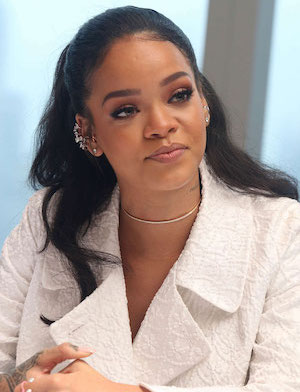
The first opportunity I had to work with Rihanna was in 2014. I got a call at 5 a.m., and the call said that Rihanna is performing at the American Music Awards, and she wanted a 60-piece African-American orchestra. I was a natural choice for that. I worked with her again on the Black Diamond Celebration Ball, an event in Beverly Hills. We also had some recording sessions — she is a real sweetheart. You hear these stories about these divas, but she was fascinated by a number of instruments in the orchestra and by the sounds the orchestra could make. She took an instant liking to the harp and she couldn’t get enough of that.
[With] Wu-Tang, I’d been a huge fan of theirs for decades and the opportunity to get to work with them was monumental. RZA is a real sweetheart and knows exactly what he wants. The most recent thing I did with RZA was a commercial for Chipotle. He has all of these ideas, and for the guacamole he wanted a clarinet, and the beef would be the strings. Each instrument had a different food title, and when we combined all these elements, it was one big Chipotle dish. It was my job to make these ideas in his head come to life.
I see that you’re also an advocate for youth music programs.
Some of the most rewarding work I’ve ever done has been with youths and serving the underserved communities. I was director of the Young Musicians Choral Orchestra program at UC Berkeley. I would fly up there for six weeks. They were inner-city school kids and I was training them to play classical instruments. I did that for five years. It was tough but rewarding, and they had a 100 percent high school graduation rate and a scholarship rate of 100 percent. It was literally saving kids’ lives. They were the first people to go off to college, and we gave them the tools — musically and otherwise — to elevate themselves.
In LA I’m working on a collective with John Acosta — he’s president of the LA Musicians Union — to give diverse young musicians a chance to come in and record movie music in the fall and I’m committed to that.
Besides telling young musicians to not spend all of their time on devices and playing video games, what advice do you have for them?
I would say that you really have to concentrate on your craft. You have to spend some time indoors and outdoors, but that you need to spend a lot of time honing your craft and then you must share it with people.

